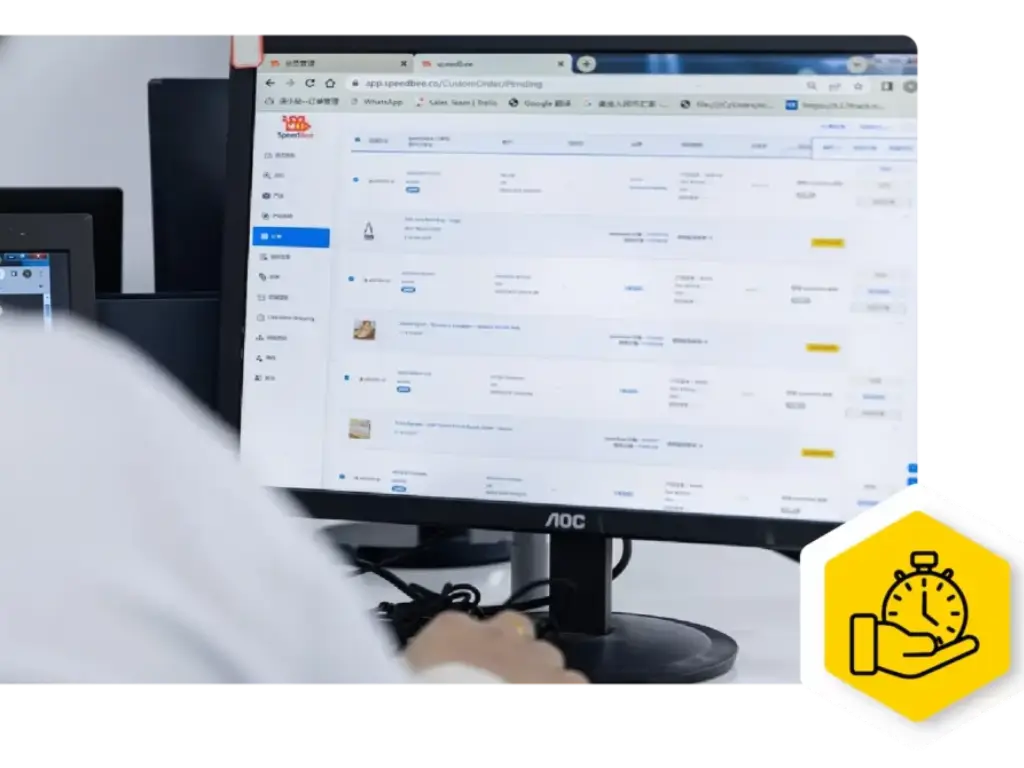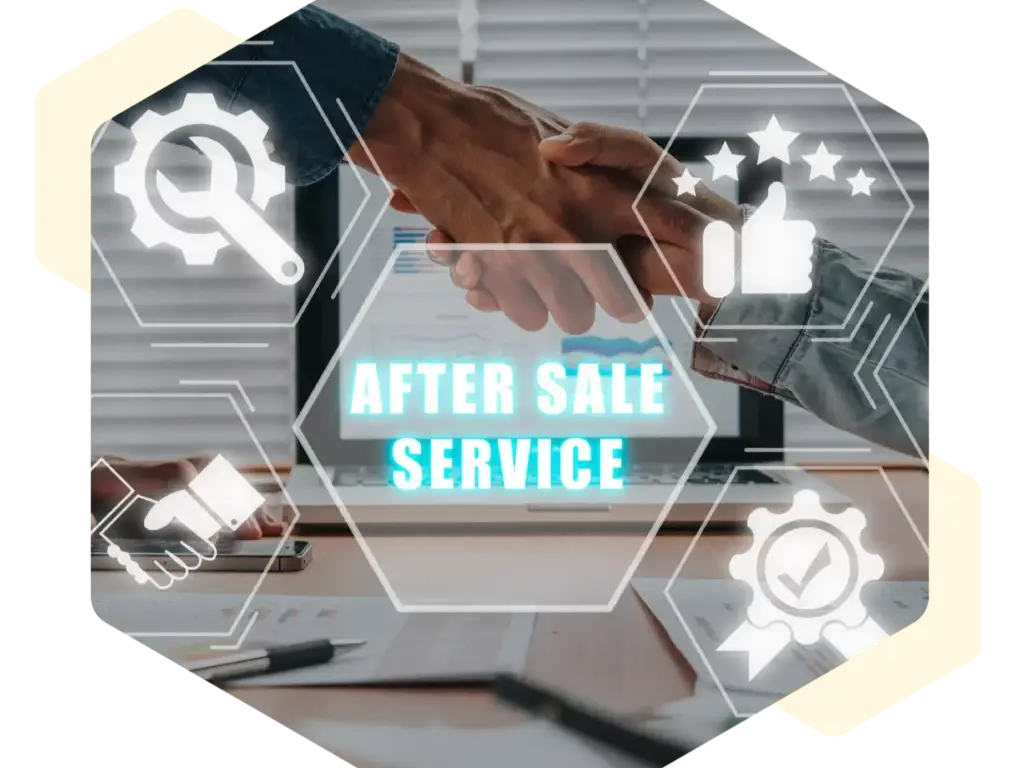Introduction
Dropshipping is a trendy business model in the e-commerce world among potential entrepreneurs. (Curious about the difference between dropshipping and eCommerce? Click here to learn more: https://www.speedbeedropship.com/dropshipping-vs-ecommerce/) In simple terms, dropshipping enables business owners to sell products without having any inventory. In this case, when a customer places an order, the seller purchases the product from a third-party supplier, who then delivers it to the customer. This also avoids the initial cost of investing in inventory and warehousing facilities, making it a good choice for individuals who want to venture into the e-commerce market without taking on significant risk. With the emphasis on marketing and customer service, entrepreneurs can sell a great variety of products without the inconvenience of operating a warehouse. So, what is dropshipping and how does it work? Let’s delve into the specifics of dropshipping and explore why it may be the right choice for you.
Understanding Dropshipping: The Basics
What is dropshipping?
Dropshipping is a type of e-commerce business that does not require physical inventory or initial investments. Business owners do not need to buy and store a lot of products as they collaborate with dropshipping suppliers who take care of inventory, packaging, and shipping. When a customer makes an order on your online store, the order is relayed to the supplier, who then makes the order and delivers the product to the customer.
This model allows any person to launch an online business without having to invest in products first. Sellers do not have to worry about stock levels, but instead, they can concentrate on selling and traffic to their e-commerce site. The beauty of dropshipping is that it is simple. All a business owner requires is a good marketing strategy to get customers and a good dropshipping supplier to deliver the orders. Nevertheless, it is necessary to select the appropriate suppliers who will be able to provide the quality of the products and their timely delivery to make the customers satisfied.
How does dropshipping differ from traditional retail?
Conventional retailing involves the business owners purchasing products in large quantities, maintaining inventory, and bearing the risk of unsold goods. The initial investment may be high, since they have to purchase in bulk and hire warehouses to store their goods. In addition to that, order fulfillment, packing, and shipping are also the tasks of traditional retail businesses that take a lot of effort and resources.
Conversely, dropshipping removes the majority of these obstacles. The dropshipping business owner does not have to deal with the complications of handling products since the supplier takes care of the inventory and delivers the products directly to the customer. Moreover, the costs of starting up this type of business are usually lower, and the risks are minimal, which makes it a good choice of business to start with when entering the world of e-commerce.
The Dropshipping Model Explained
Key players in the dropshipping process

It is important to know the major players in the dropshipping process for anyone considering venturing into this business. The three parties involved are the seller (you), the customer, and the dropshipping supplier. Your role as the seller is to manage the online store, promote your products, and provide customer service. Nevertheless, you do not deal with the products yourself. Rather, the supplier will store the products, take orders, and ship directly to the customer.
In order to be successful in dropshipping, you must have a good relationship with good suppliers who are able to provide high-quality products and deliver them on time. This is the relationship that will be the foundation of your dropshipping business model because you will rely on them to provide quality products and customer satisfaction. As an example, when selecting a dropshipping supplier, you will want to take into consideration their reliability, shipping times, and communication to make sure that the customer experience is not hindered.
(Want to start your own dropshipping business but not sure where to begin? Click here for a step-by-step guide: https://www.speedbeedropship.com/how-to-start-dropshipping/)
How order fulfillment works in dropshipping
The dropshipping order fulfillment is not that complicated, yet it involves close cooperation between the seller and the supplier. When a customer makes an order in your online store, the order details are relayed to the supplier. The supplier then takes the order, packs the product, and delivers it to the customer. This is a smooth process for the customer who only notices the product coming out of your store.
The most important thing in dropshipping is to have a stable order fulfillment process. This implies collaborating with suppliers that have the capacity to deliver on time, products are of good quality, and any problems that may occur in the process of fulfilling the orders. Also, tracking information should be given to customers to track their order progress, which increases customer experience and satisfaction.
Common supply chain steps in dropshipping
The common dropshipping supply chain has a number of important processes, such as product sourcing, order placement, and customer service. It starts with the business owner choosing a niche and finding a dropshipping supplier who stocks the products. After a customer has made an order on your online store, the order is then transferred to the supplier who then processes the order and delivers it to the customer. The supply chain role of the seller is primarily concerned with marketing, customer acquisition and customer support.
Although the supply chain steps may appear to be straightforward, every step is crucial to the provision of a seamless customer experience. Taking care of your relationship with your dropshipping suppliers and customer service will make your business run smoothly. As your business expands, you need to streamline the supply chain, optimize the products you offer and collaborate with suppliers to ensure a high level of service.
Pros and Cons of Dropshipping
Advantages of starting a dropshipping business
One of the main benefits of a dropshipping business is the low start-up costs. No investment in inventory, storage facility, and physical goods are required, which reduces the financial risks to a minimum. This makes it easy to start an online business with minimal financial input especially to the newcomers in the ecommerce arena.
The second advantage of dropshipping is that one can sell a wide variety of products without the need to handle inventory. This flexibility allows the business owners to experiment with different niches and expand their business at a fast rate. Dropshipping will enable you to focus on improving your marketing efforts, reaching out to more customers through social media advertising, and building a strong brand image. The overheads are also low and this makes it easy to maintain healthy profit margins, especially when you have an effective order fulfillment procedure.
Challenges and risks involved
Although dropshipping has a lot of opportunities, it is not without its challenges. Among the primary risks is the reduced profit margins since dropshipping suppliers tend to increase the prices of products because of the additional expenses of the fulfillment services. This implies that to sustain a profitable business model, you must be keen on pricing and make sure that your ecommerce store is well-marketed to get customers.
The other challenge is the quality of the products and customer satisfaction. You cannot physically touch the products, so it is hard to check the quality of the products yourself. Dealing with unreliable suppliers or poor communication with them may cause delays, negative reviews, and eventually, loss of customers. To prevent this, you will have to spend time researching trustworthy suppliers and providing good customer service to keep loyal customers. (Wondering if dropshipping is legal? Click here to understand the legal aspects of starting a dropshipping business: https://www.speedbeedropship.com/is-dropshipping-legal/)
| Pros | Cons | Considerations |
| Low Start-up Costs: No need for investment in inventory, storage, or physical goods. | Lower Profit Margins: Dropshipping suppliers often charge higher prices due to fulfillment costs. | Focus on efficient pricing strategies to maintain a profitable margin. |
| No Inventory Management: Sell a wide variety of products without handling inventory. | Product Quality Control: You cannot physically inspect products, so quality control is difficult. | Research and partner with reliable suppliers to ensure product quality and minimize customer complaints. |
| Scalable Business: Quickly expand by experimenting with different niches and products. | Reliance on Suppliers: Your business depends on suppliers for stock, shipping, and customer service. | Choose suppliers with a proven track record and maintain strong communication to avoid delays or misunderstandings. |
| Low Overhead Costs: No warehouse, storage, or employee costs. | Customer Service Challenges: Since you don’t handle the products, resolving issues may be tricky. | Ensure excellent customer service and a clear return/exchange policy to build customer trust and loyalty. |
| Flexibility in Product Offering: Easily adjust product offerings to match market trends. | Shipping Times & Costs: Longer shipping times from suppliers can negatively affect customer experience. | Partner with suppliers who offer reliable and quick shipping options, and set clear delivery expectations for customers. |
SpeedBee Dropshipping is the answer to your search of a reliable, stress-free dropshipping experience. As opposed to most large dropshipping sites, we focus on customer satisfaction by ensuring that all risks are on our side. We guarantee that your orders will be delivered in time, in case a package is lost by the carrier, we will send it again free of charge. In case of any problems with the quality of the product or its packaging, we will handle it and ship replacements. And we are transparent in our pricing, no surprises. Our advantage is that we have better control over inventory, quality and packaging, ensuring that your products reach you in the best condition. SpeedBee is the only and first dropshipping supplier that will enable you to have full control of your supply chain, and have a smooth business experience. Visit us now! Looking for reliable Shopify dropshipping suppliers? Click here to discover the best options for your store: https://www.speedbeedropship.com/shopify-dropshipping-suppliers/
Dropshipping vs. Other E-commerce Methods
Retail arbitrage vs. dropshipping
Retail arbitrage and dropshipping are two common e-commerce strategies, yet they are very different in their functionality. Retail arbitrage is the process of buying products at a lower price from retail stores or clearance sales and selling them online for a profit. The most important issue in this case is inventory management because you have to buy the products in advance and keep them until they are sold.
Conversely, dropshipping enables you to forego inventory management. The supplier does the storage, and you only pay when a customer orders the products. Although retail arbitrage needs a greater initial investment and storage facility, dropshipping is less risky and more flexible. Nevertheless, retail arbitrage may offer better profit margins in case you can find the right products to resell at a decent price, so it can be an alternative to those who can afford to maintain inventory.
Private labeling and white labeling

Dropshipping is commonly mistaken for private labeling and white labeling, but they are different models. In private labeling, the owners of the business buy generic products from the suppliers, brand them, and sell them as their own. This will enable you to create a distinct brand identity. However, it will cost you more upfront, inventory management, and quality control.
White labeling is close to this, except that here products are sold under your brand name, but there is no customization or modification of the product itself. Although both models will enable greater control over the quality and branding of products, they are also associated with greater upfront costs and the necessity to have more substantial inventory management than dropshipping. Dropshipping is probably the better choice in case you want a model that requires less upfront investment.
Beginner’s Guide to Starting Dropshipping
What you’ll need to get started
The first thing you will require to start a dropshipping business is an e-commerce platform. The most popular ones are Shopify, WooCommerce, and BigCommerce. These platforms give you the tools you need to establish your online store and connect with dropshipping suppliers. You will also require a domain name that will represent your brand and one that customers can easily remember.
Then, you will have to locate reputable dropshipping suppliers that will be able to deliver your orders effectively. Oberlo, SaleHoo, and AliExpress are some of the platforms that are used to find good suppliers. Finally, you will require a good marketing strategy to draw customers to your online shop. This may include paid social media advertising, search engine optimization (SEO), or influencer marketing to place your products in front of the correct audience.
Essential resources and tools for beginners
As a newbie, you need to have several tools that can make your dropshipping business more efficient. Such tools as inventory management can assist you in monitoring the stock and preventing overselling of the products. You can also use tools such as Google Trends to determine the trending products to sell and streamline your marketing.
In customer service, you can use chatbots or customer support software to offer quick responses to questions. You can also use email marketing tools and build a good email list to keep customers and promote repeat business. Also, you can use analytics tools to analyze the performance of your online store and adjust your strategy to enhance customer experience in the long run.
Step-by-Step Guide: How to Start a Dropshipping Business
Step 1: Research and choose your niche
The most important and first step in starting your dropshipping business is to choose a niche. A niche enables you to reach a particular audience and concentrate on marketing. When choosing your niche, consider such factors as product demand, profit margin, and competition. Such tools as Google Trends and market research will allow you to find out what products are currently popular and determine the degree of competition in the selected niche.
Step 2: Find reliable dropshipping suppliers
After you have selected your niche, you need to identify reliable dropshipping suppliers. Seek suppliers who have positive reviews, have a good shipping system, and are affordable. Such platforms as AliExpress and Oberlo can help you find reliable suppliers, and you should test the products before adding them to your store to make sure they are good.
Step 3: Set up your online store
The next step is to establish your online store. Select an ecommerce platform that fits your objectives and offers the features you require to make a professional-looking site. Make your store design unique to your brand and customer-friendly. Ensure that your site is mobile-friendly because most customers are now shopping and browsing through their phones.
Step 4: Add products and set pricing
Once you have established your store, you will have to add products and price them competitively. Study your competitors so that you can be able to offer a good price, but at the same time you should be able to make a good profit margin. When pricing your goods, be conscious of the price of goods and the shipping costs as this will directly affect your profit.
Step 5: Launch your store and market your products
After all the preparations are done, you can open your store and begin promoting your products. To increase traffic to your site, use social media advertisements, search engine optimization (SEO), and influencer marketing. The greater the exposure your store has, the higher the chances of making sales. Monitor your analytics to determine what marketing activities are the most effective and adjust your strategy accordingly.
Tips for Long-Term Success in Dropshipping
Optimizing customer service and retention

One of the most important things when it comes to operating a successful dropshipping business is customer service. Make sure that your customers get a good experience through good customer support. Be quick to respond to questions, address problems effectively, and provide refunds or exchanges where needed. Positive customer experience will lead to repeat buying and positive reviews, which are essential in expanding your business.
Managing inventory and supplier relationships
Although dropshipping eliminates the physical inventory, the most important aspect is to manage your supplier relationship to make sure that orders are fulfilled in time. Keep in touch with your suppliers regularly so that they are able to supply the demand and deliver quality products. Establish good relationships by providing regular orders and solving any issues as soon as possible. This will assist you to have a smooth order fulfillment process and a good reputation among customers.
Conclusion
To sum up, dropshipping is a low-risk and flexible method of launching an online business with minimal initial investments. Business owners can develop a profitable ecommerce store by collaborating with reputable suppliers and dedicating their time to customer service and marketing. Although it might not be devoid of difficulties, dropshipping model has numerous benefits such as the possibility to sell a wide range of products and the opportunity to work anywhere with the internet connection. Anyone can make it in the dropshipping world with the proper attitude and effort.



